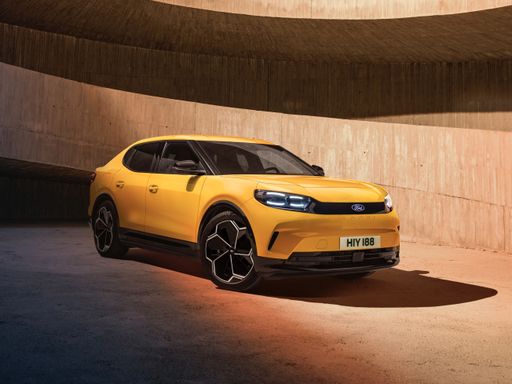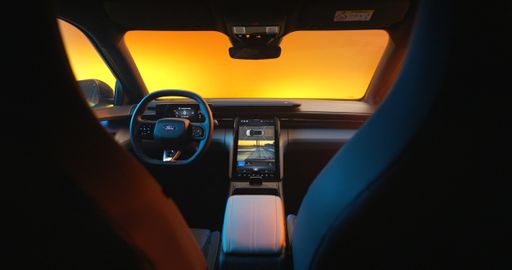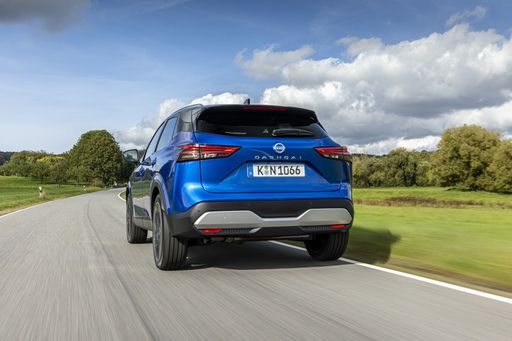Ford Capri vs Nissan Qashqai - Differences and prices compared
Costs and Efficiency:
Price and efficiency are often the first things buyers look at. Here it becomes clear which model has the long-term edge – whether at the pump, the plug, or in purchase price.
Nissan Qashqai has a distinct advantage in terms of price – it starts at 29600 £, while the Ford Capri costs 36300 £. That’s a price difference of around 6737 £.
Engine and Performance:
Under the bonnet, it becomes clear which model is tuned for sportiness and which one takes the lead when you hit the accelerator.
When it comes to engine power, the Ford Capri has a noticeable edge – offering 340 HP compared to 205 HP. That’s roughly 135 HP more horsepower.
In acceleration from 0 to 100 km/h, the Ford Capri is significantly quicker – completing the sprint in 5.30 s, while the Nissan Qashqai takes 7.60 s. That’s about 2.30 s faster.
In terms of top speed, the Nissan Qashqai performs a bit better – reaching 206 km/h, while the Ford Capri tops out at 180 km/h. The difference is around 26 km/h.
There’s also a difference in torque: Ford Capri pulls convincingly stronger with 679 Nm compared to 330 Nm. That’s about 349 Nm difference.
Space and Everyday Use:
Whether family car or daily driver – which one offers more room, flexibility and comfort?
Seats: offers more seating capacity – vs .
In curb weight, Nissan Qashqai is distinct lighter – 1420 kg compared to 1914 kg. The difference is around 494 kg.
In terms of boot space, the Ford Capri offers to a small extent more room – 572 L compared to 504 L. That’s a difference of about 68 L.
In maximum load capacity, the Ford Capri performs slight better – up to 1510 L, which is about 63 L more than the Nissan Qashqai.
When it comes to payload, Ford Capri to a small extent takes the win – 587 kg compared to 520 kg. That’s a difference of about 67 kg.
Who wins the race?
The Ford Capri proves to be leaves the rival little chance and therefore becomes our DriveDuel Champion!
Ford Capri is the better all-rounder in this comparison.
 @ Ford Motor Company / Ford Media Center
@ Ford Motor Company / Ford Media Center
Ford Capri
Costs and Consumption
View detailed analysis
Engine and Performance
View detailed analysis
Dimensions and Body
View detailed analysis
Ford Capri
The Ford Capri turned the family car into something cheekily sporty, with a long, rakish profile that still promises fun at a glance. Today it lives on as a lovable classic — easy to tinker with, enjoyable to drive and guaranteed to raise smiles at any meet.
details @ Ford Motor Company / Ford Media Center
@ Ford Motor Company / Ford Media Center
 @ Ford Motor Company / Ford Media Center
@ Ford Motor Company / Ford Media Center
Nissan Qashqai
The Nissan Qashqai blends practical, family-friendly packaging with SUV styling that refuses to shout, making it a sensible and dependable choice for everyday life. It’s comfortable to live with, economical on the road, and neatly equipped enough to feel modern without ever feeling precious — perfect if you want crossover versatility without the drama.
details @ Nissan Motor Corporation
@ Nissan Motor Corporation
 @ Nissan Motor Corporation
@ Nissan Motor Corporation
 @ Nissan Motor Corporation
@ Nissan Motor Corporation
 @ Nissan Motor Corporation
@ Nissan Motor Corporation
 @ Nissan Motor Corporation
@ Nissan Motor Corporation
 @ Ford Motor Company / Ford Media Center
@ Ford Motor Company / Ford Media Center
|
 @ Nissan Motor Corporation
@ Nissan Motor Corporation
|
|
|
|
Costs and Consumption |
|
|---|---|
|
Price
36300 - 50900 £
|
Price
29600 - 39900 £
|
|
Consumption L/100km
-
|
Consumption L/100km
4.5 - 6.8 L
|
|
Consumption kWh/100km
13.8 - 16.4 kWh
|
Consumption kWh/100km
-
|
|
Electric Range
374 - 627 km
|
Electric Range
-
|
|
Battery Capacity
52 - 79 kWh
|
Battery Capacity
-
|
|
co2
0 g/km
|
co2
102 - 154 g/km
|
|
Fuel tank capacity
-
|
Fuel tank capacity
55 L
|
Dimensions and Body |
|
|---|---|
|
Body Type
SUV
|
Body Type
SUV
|
|
Seats
5
|
Seats
5
|
|
Doors
5
|
Doors
5
|
|
Curb weight
1914 - 2174 kg
|
Curb weight
1420 - 1665 kg
|
|
Trunk capacity
567 - 572 L
|
Trunk capacity
479 - 504 L
|
|
Length
4634 mm
|
Length
4425 mm
|
|
Width
1872 mm
|
Width
1835 mm
|
|
Height
1626 mm
|
Height
1625 mm
|
|
Max trunk capacity
1505 - 1510 L
|
Max trunk capacity
1422 - 1447 L
|
|
Payload
570 - 587 kg
|
Payload
466 - 520 kg
|
Engine and Performance |
|
|---|---|
|
Engine Type
Electric
|
Engine Type
Petrol MHEV, Full Hybrid
|
|
Transmission
Automatic
|
Transmission
Manuel, Automatic
|
|
Transmission Detail
Reduction Gearbox
|
Transmission Detail
Manual Gearbox, CVT, Reduction Gearbox
|
|
Drive Type
Rear-Wheel Drive, All-Wheel Drive
|
Drive Type
Front-Wheel Drive, All-Wheel Drive
|
|
Power HP
170 - 340 HP
|
Power HP
140 - 205 HP
|
|
Acceleration 0-100km/h
5.3 - 8.7 s
|
Acceleration 0-100km/h
7.6 - 10.2 s
|
|
Max Speed
160 - 180 km/h
|
Max Speed
170 - 206 km/h
|
|
Torque
310 - 679 Nm
|
Torque
240 - 330 Nm
|
|
Number of Cylinders
-
|
Number of Cylinders
3 - 4
|
|
Power kW
125 - 250 kW
|
Power kW
103 - 151 kW
|
|
Engine capacity
-
|
Engine capacity
1332 - 1498 cm3
|
General |
|
|---|---|
|
Model Year
2024 - 2025
|
Model Year
2025
|
|
CO2 Efficiency Class
A
|
CO2 Efficiency Class
E, C
|
|
Brand
Ford
|
Brand
Nissan
|
Is the Ford Capri offered with different drivetrains?
The Ford Capri is offered with Rear-Wheel Drive or All-Wheel Drive.
The prices and data displayed are estimates based on German list prices and may vary by country. This information is not legally binding.
